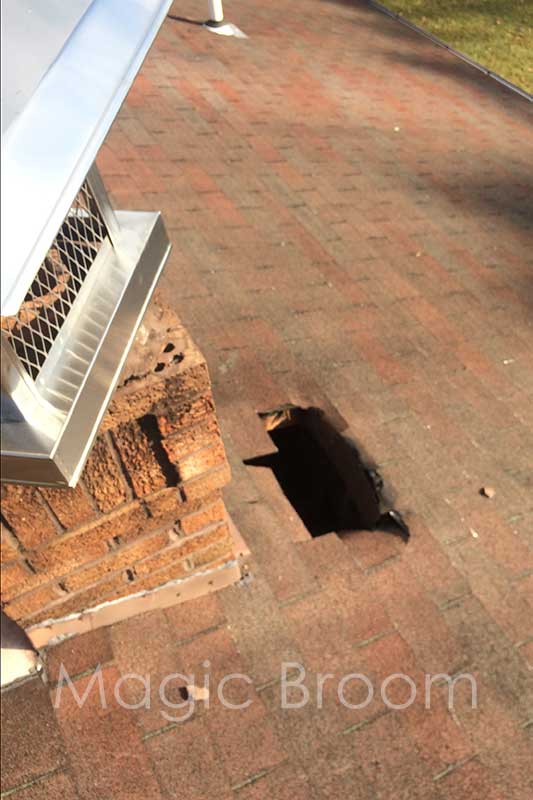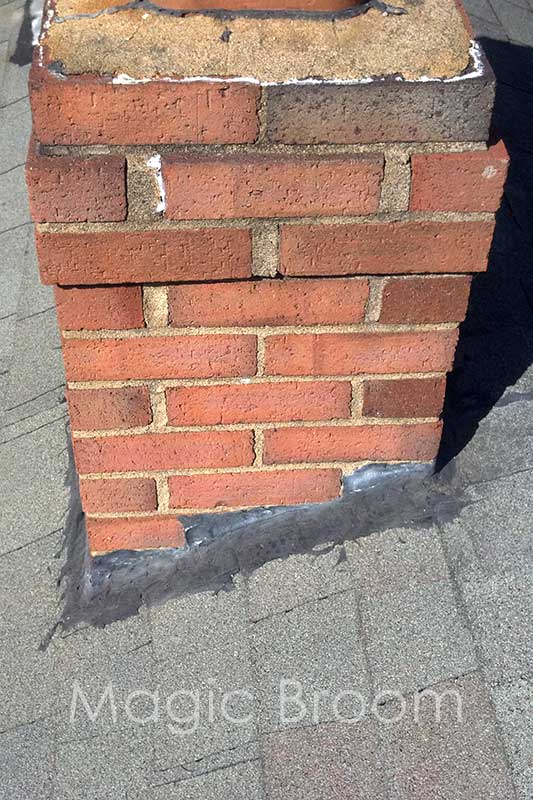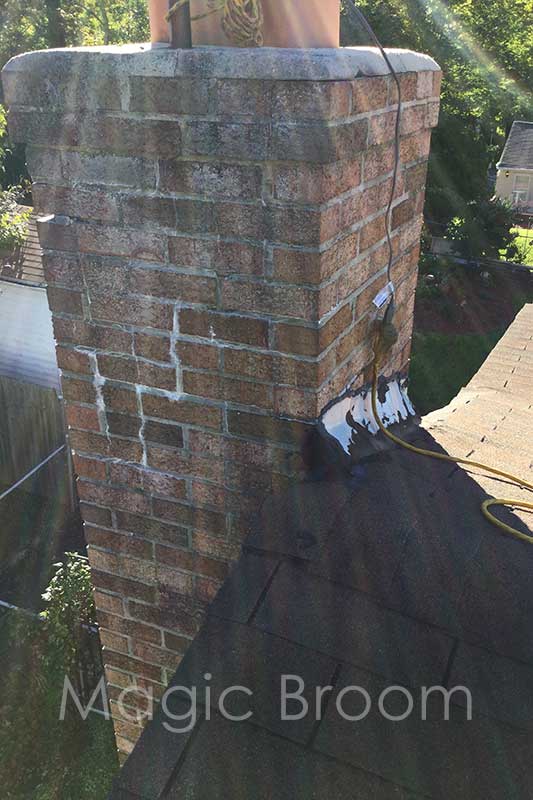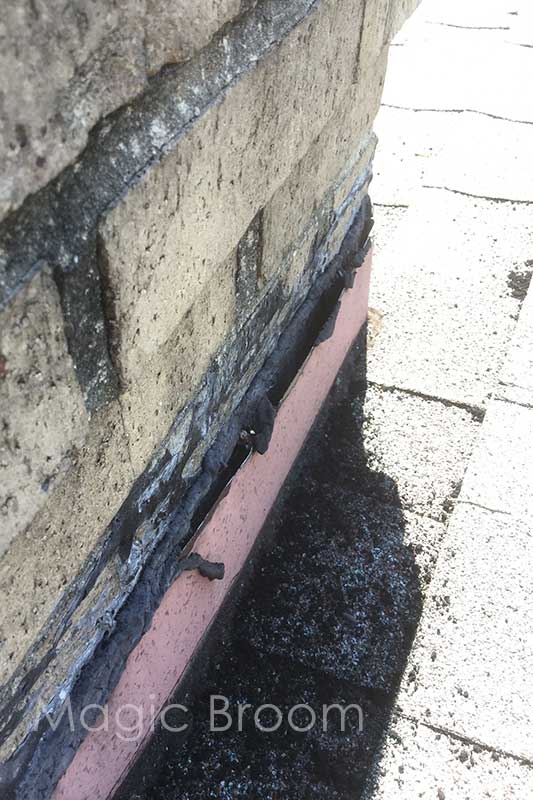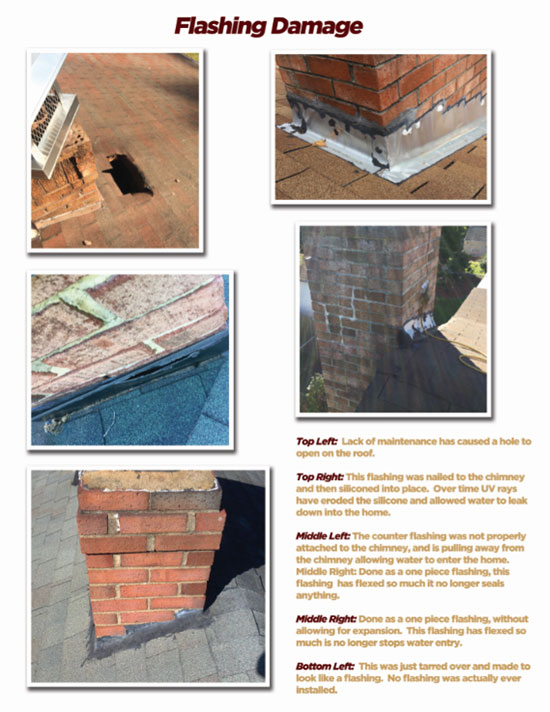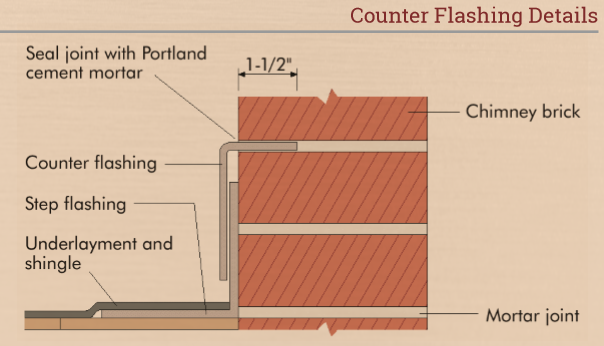The Important Role That Flashing Plays
The place where your chimney comes together with your roof is very vulnerable and prone to leaks. That’s where flashing comes in: flashing is the material at the base of the chimney designed to waterproof the juncture where the chimney meets the roof. These angles vary from home to home, so every flashing job must be customized for each particular chimney and roof.
Flashing consists of several overlapping layers of metal (step flashing and counter flashing) which cover the roof and continue partially up the chimney. The step flashing will go under the shingles and will be nailed into the roof. Counter flashing should be counter sunk or ground into the chimney and then either caulked or mortared into place, for a long-lasting seal.
It’s important to note that the step flashing and the counter flashing should be independent of each other. At no point should they be tied together. Constant expansion and contraction of the house and chimney would eventually weaken the seal of the flashing and cause a water leak if they were tied together. When properly installed, the flashing allows the chimney and roof to expand and contract, without breaking the waterproof seal to the home. Unfortunately, we find that flashing is frequently installed improperly, leaving this critical area vulnerable to extensive water damage.
Even if your flashing was properly installed, there are several things that could cause it to be less effective:
- House Settling – As strange as it may sound, the settling of a home can shift the flashing and cause issues with separation. This shifting may result in openings that provide wind with leverage during a storm and may also provide a way in for animals and rain.
- Earthquake –Although earthquakes are not common here on the East coast, they do happen. Remember the earthquake of 2011? Many homeowners don’t realize the damage that the shifting of an earthquake can cause to flashing. If you’ve ever been in a home during an earthquake, you know that it feels like the parts of the house are moving in different directions. That shifting can cause serious structural damage, and can also cause the flashing to move out of place. If you haven’t had your flashing checked since before the earthquake of 2011, you may want to have it looked at to make sure it’s still effective.
- Wind Damage – It seems that our area has taken a lot of hurricane hits in the last few years. It’s also safe to say that storms seem to be getting stronger and producing more damage. With every storm that your home endures, there is opportunity for flashing damage. In many cases, wind literally pulls part of the flashing off of the roof or chimney. Unfortunately, because the flashing is virtually unseen by homeowners, this damage often goes unnoticed until significant leaks arise. For this reason, we recommend having your flashing inspected for damages after any major weather event.
- Animal Tampering – Animals can be cute and cuddly, but they can also be quite destructive. They may peck or pry at your flashing, leaving holes and openings for wind and rain damage. Be sure to have your flashing regularly inspected for any signs of animal tampering so that repairs can be made early on.
- Water Damage – When properly installed, flashing is designed to encourage rain to run off of the roof. However, if flashing is improperly installed or bent due to wind or animal tampering, water can accumulate on the surface. Over time, this can lead to rust and corrosion, leaving holes and providing an opening for further water damage.
- The roof is torn off and replaced
- The flashing is rusting
- The walls or ceilings near the chimney are water-stained
- The flashing has been tarred over
- The roof is sagging or soft
- The flashing is allowing water to leak into the home
Our flashing repair & replacement service is the solution
- Installation of a custom fit, flexible membrane formed around the base of the chimney where it intersects with the roof to form a waterproof barrier.
- 7 year product warranty
Each flashing replacement service includes:
- New underlayment (ice dam)
- New shingles (closest match possible in both color and style)
- New step flashing
- New counter flashing, which overlaps the step flashing, and is sealed into the chimney
- Removal and disposal of all old materials
- 10 year warranty
Before
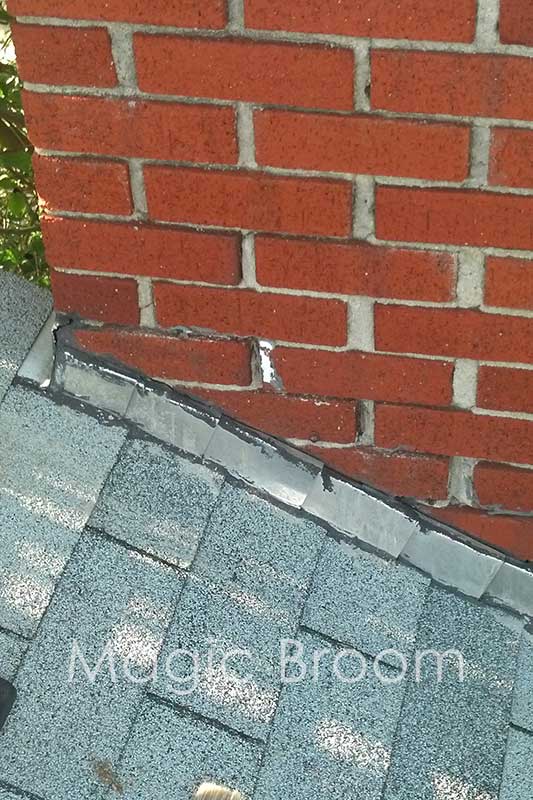
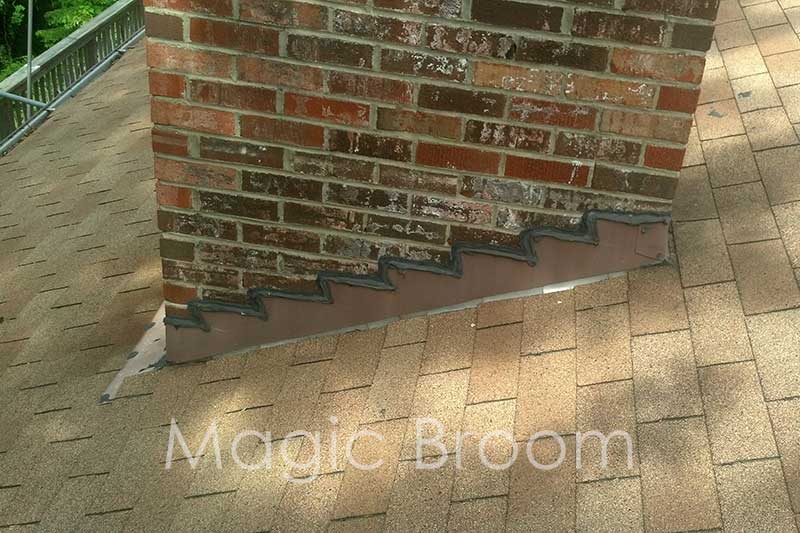
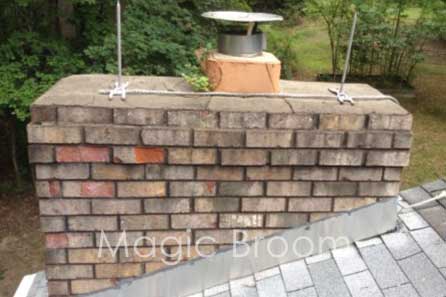
After
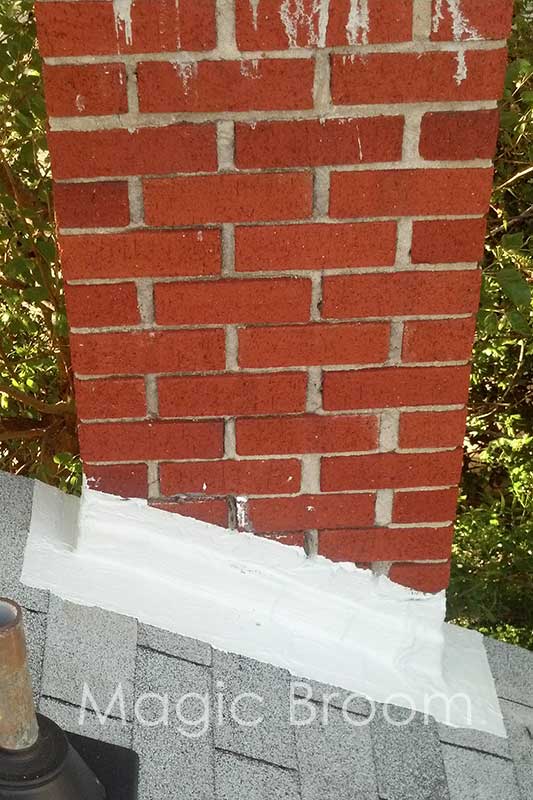
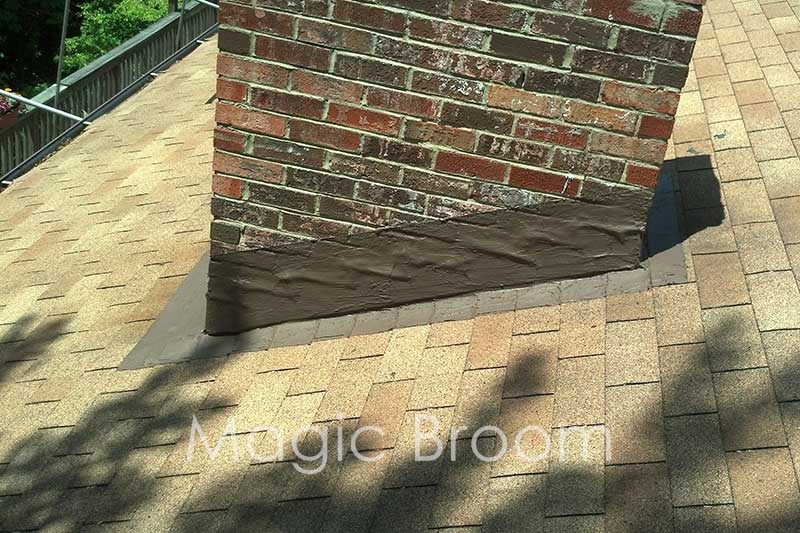
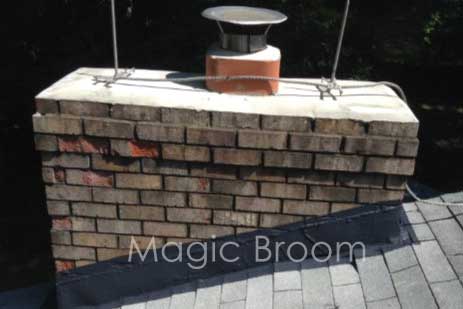
If you haven’t had your flashing inspected recently, make it a priority! Regular inspections can alert you to any damage or issues with flashing that may otherwise go unnoticed. Don’t wait until you have extensive water damage – call Magic Broom today!
You may need to have your chimney waterproofed to avoid problems with a leaky chimney, so talk it over with the experts at Magic Broom to discuss the options.

